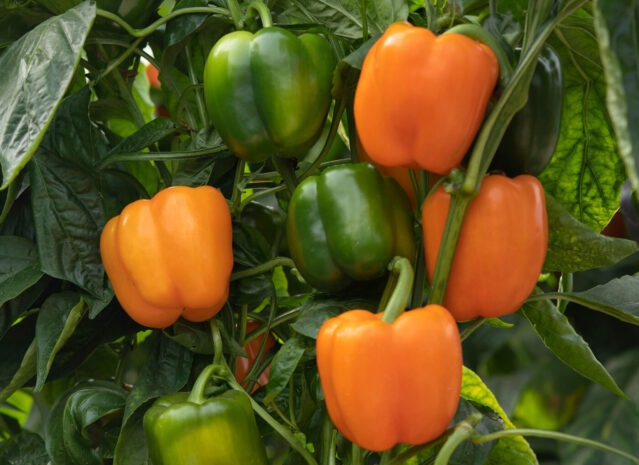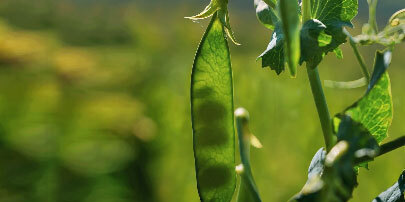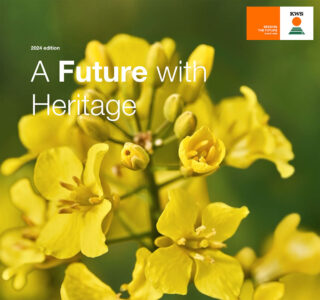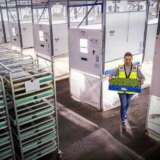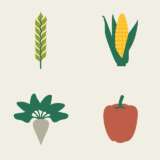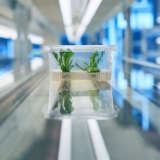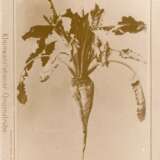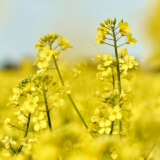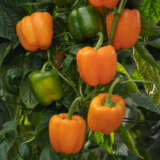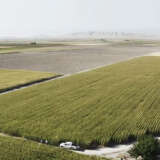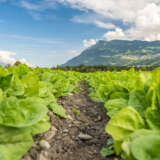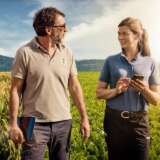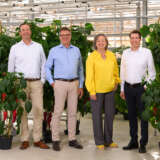AI in plant breeding:
The perfect pepper in view
Artificial intelligence (AI) offers great potential for many areas of plant breeding. Projects currently in progress in KWS’s fairly new Vegetables business unit show how AI-based applications can support breeders in their work.

Dr. Carlos Duque Afonso | Senior Scientist Data Capture & Automation
The right shape, the right color, the right taste – when it comes to growing pepper plants, the end customer’s subjective preferences are important. In this respect, pepper breeding – like vegetable breeding in general – differs from other KWS segments, where the focus is primarily on yield and resistance. Before breeders start developing a new variety, they define clear requirements with their colleagues from Product Management and Sales which reflect the wishes of the end consumer.
More and better data for breeding
For example, in order to check if pepper varieties from the breeding program meet the defined criteria, employees take samples of fruit from the test plots and determine characteristics such as weight, shape, size, color or the thickness of the flesh, depending on the respective variety. In this process, known as phenotyping, they will be supported by artificial intelligence in future. In ongoing projects, KWS data scientists are developing several AI-based applications that automatically measure and analyze the fruits of different vegetable varieties using images. Dr. Carlos Duque Afonso, who is involved in the project focused on peppers, explains: “AI enables the app to reliably identify a potentially unlimited number of pepper fruits in an image. These can then be measured precisely using conventional image analysis. As a result, the tool reduces the manual workload, but above all, increases the quantity and quality of the data our breeders obtain.”
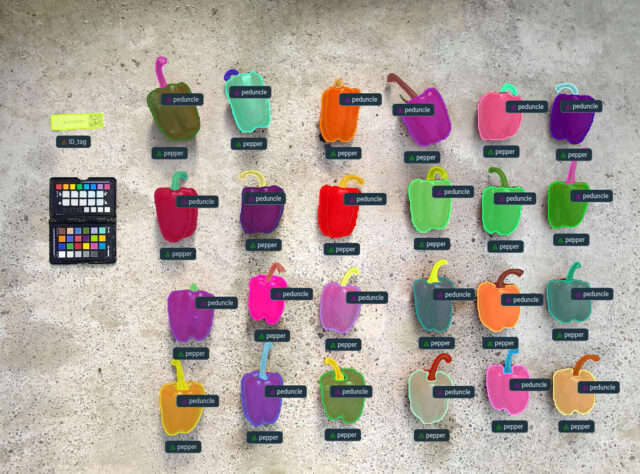
The tool catalogs the fruits detected in an image and links them to a specific trial with the help of an ID tag. A color checker is used for color calibration.
Learning to recognize peppers
Unlike other applications, artificial intelligence does not simply apply predefined procedures to a problem, but independently develops rules that can be used to solve certain types of tasks. To do this, however, it must be “trained” with sample data. “For training purposes, we use images in which the individual fruits and peduncles are color-coded. AI analyzes these sample solutions and gradually learns to correctly identify pepper fruits,” notes Duque Afonso.
One challenge facing the project team is the wide diversity of pepper types KWS breeds. While the software already provides reliable and accurate results for some types, others require further training. “In many ways, artificial intelligence learns like humans: It must first have seen a variation many times before it can reliably recognize it.” The application should be operational by 2025 and will then be extensively tested in practice at the breeding stations.
Innovative tools for vegetable breeding
KWS has been active in the vegetable seed sector since 2019. In order to build up its own breeding activities, a network of breeding and research sites have been established in Europe and Latin America in recent years. The company also invests in innovative technologies that support breeders in their work. In the digital sector, these include the application for phenotyping peppers as well as comparable tools for cucumbers, tomatoes, melons, watermelons and beans. “Artificial intelligence is no substitute for human expertise,” says Carlos Duque Afonso. “But it can help breeders to make their decisions on a broader information basis and thus accelerate the breeding of innovative varieties. In the end, our customers benefit.”
KWS background
Digital phenotyping
The distinction between genotype and phenotype dates back to Wilhelm Johannsen (1911). A genotype is the sum of the properties inherited from the parents. The phenotype, i.e. the appearance of a plant of a plant is defined accordingly, but also modified in accordance with environmental conditions. Insights into genomes provide breeders with lots of important information about individual plant lines. However, this is by far not sufficient to make breeding decisions. The properties of a line have always had to be examined in the field too. This requires a lot of breeding experience and time. In addition, there are features that cannot or can hardly be discerned with the naked eye.
While genomic tools are widely available across crops, the situation is different for phenomics. Consequently, KWS is investing in the development of new technologies to automatically record certain plant characteristics. Improving objectiveness and accuracy in phenotyping and combining it with genomic tools can greatly improve the breeding process.
More examples on phenotyping:
Get to know how KWS is researching the complex trait drought stress
